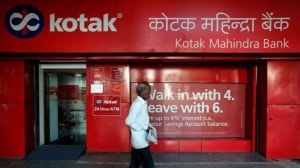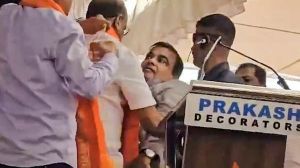- India
- International
Enrolment over education
Shutting down schools in the pretext of low enrolment will impact education of children from marginalised sections of the society, violates the vision of NEP 2020.
 The new “licence raj” will defeat citizens’ rights and result in high-handedness, harassment and corruption. The authors of NEP have almost deliberately ignored the contradiction between the two principles of autonomy and regulation.
The new “licence raj” will defeat citizens’ rights and result in high-handedness, harassment and corruption. The authors of NEP have almost deliberately ignored the contradiction between the two principles of autonomy and regulation.The National Education Policy 2020 proposes foundational learning of five years beginning at the age of three. In contrast to this proposal, the Odisha government plans to close 14,339 primary and upper primary schools. The reason cited for the proposed shutdowns is the low enrolment of students. State governments such as Rajasthan, Uttarakhand, Gujarat, Jharkhand, and others have also closed/merged schools with a lower number of students in a decade after the coming of the RTE Act 2009. The RTE Forum estimates that in total, more than one lakh government schools have been closed or merged in the country between 2010 to 2020.
Schools with 20-30 enrolled students cannot be considered an optimal utilisation of resources. At the same time, is it the obligation of students to get others to augment the enrolment data? How many of us will send our children to these schools without proper facilities and fewer teachers? Pragmatists consider values as situational and relative to cultures and societies, but did we acknowledge the preferences of local communities in our curriculum or other educational processes?
The majority of schools mapped for closure in Odisha are in educationally backward pockets of the state — districts such as Rayagada, Mayurbhanj, Kandhamal, and Koraput have a substantial number of tribal people. And what should be called rationalisation — providing learning opportunities to the children as guaranteed by the Right to Education or diversion of resources from marginalised children?
The dichotomy of our school planning is the short-term memory of schemes and initiatives. After the government of Madhya Pradesh launched an education guarantee scheme in 1997 intending to open a primary school for every child in the state, many other state governments followed this model of school on demand.
The scheme, popularly known as EGS, offered villagers of underserved areas to demand a school if there was no schooling facility within a radius of one kilometre. The government gave a guarantee to respond to the call within 90 days of receiving such a request by the local community. In the EGS model, the community provided land/space and the local panchayat appointed the teacher. The state government offered grants for the teacher’s salary.

At that time, Chhattisgarh was part of Madhya Pradesh. The majority of the tribal hamlets got one room “school”. Though the quality of teachers appointed in these schools raised concerns, other states, having tribal populations, followed similar models and ensured access to education. The Sarva Shiksha Abhiyan and the millennium development goals played a catalytic role in the expansion of schools. If the community had donated a piece of land for the education of their children, should school closure not be treated as a breach of trust?
Even in the next 10-15 years, the population of many small hamlets is not going to touch 1,000 families or they are unlikely to send 250-300 children to school. In this case, what should be the approach towards maintaining existing schools? And is it fair to make one size fit for all? Do we need to recruit more teachers or spread the number of teachers wider?
Why can’t state governments consider the gradual advancement of one-room schools? Teachers are not appointed timely and serious efforts are not made to improve the learning environment. Thus, parallel school systems are allowed to flourish. Then who should take the blame for the failure?
If quality schools had been developed for the marginalised children, the scenario would have been different. The low enrolment would not have then become an issue leading to school closure.
If resources allow, in the coming years, the NEP will be offering a five-year foundational learning framework. Do the central and state governments expect children below six years to walk long distances for foundational education? They may have to reopen the schools that are getting closed in the name of rationalisation under a new scheme.
Some educationists have written a letter to the chief minister of Odisha, Naveen Patnaik, urging him to protect the schools from closure. The chief minister ought to keep these words of American educationist John Dewey in his mind: “Education is not a preparation for life, education is life itself.”
The writer is Adjunct Professor TISS, Mumbai
EXPRESS OPINION
More Explained
Apr 24: Latest News
- 01
- 02
- 03
- 04
- 05










































